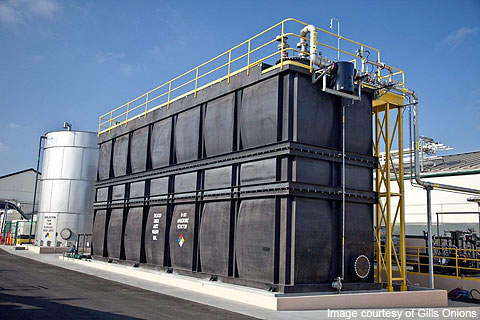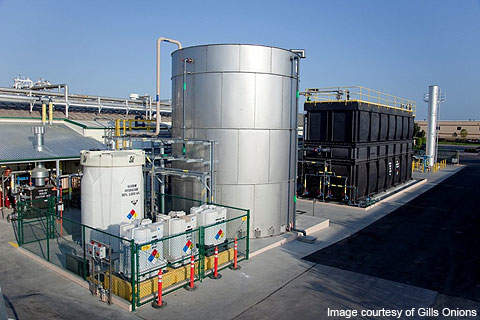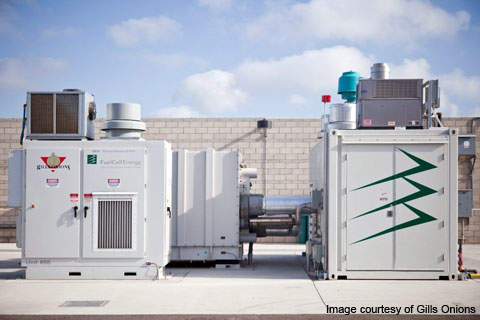In 2007, US-based onion processor Gills Onions launched a direct fuel cell (DFC) power plant to convert onion waste into electrical energy in Oxnard, California. The plant generates electricity by converting 300,000lb of onion waste into bio-gas, reducing greenhouse emissions by 30,000t a year.
The $9.5m plant generates 600KW of electricity a year, meeting 35-45% of the company’s needs.
The plant achieved annual cost savings of $700,000 while $400,000 was saved through onion waste treatments and handling.
Plant details
The plant is equipped with an anaerobic digester and two 300KW fuel cells. A macerator grinds the onion waste and extracts the juice in a screw press. The juice is fed into a 70,000gal acidification tank equipped with two mixers connected to an anaerobic digester.
The digester has a capacity of 110,000gal and is painted black to absorb heat from the sun to keep its temperature between 92° and 95°F. The gas produced in the digester is used to power fuel cells to generate electricity.
Technology
Onion waste (peels, tops and tails) is converted to produce 30,000gal of juice and 20t of onion cake a day. The juice, high in soluble organics with 60,000 parts per million (ppm) chemical oxygen demand, is extracted in two stages.
The first stage involves juice extraction and the grinding of waste. Lime is added to the waste and chopped in a large grinder. The waste is sent to the screw press for extraction. The lime enhances the juice levels in the waste and prevents the pieces from sliding during extraction. Juice forms 70 to 75% of the total waste while the remaining 30 to 25% is the solid cake, which is sold as cattle feed. As only 50% of the juice is extracted in the first stage, the onion cake is sent to the second stage for further grinding and extraction.
The onion juice is put through acidification for two days to ferment. As the juice contains high sulphur levels (5,000ppm) unsuitable for the fuel cells in the anaerobic digester, a two-stage iron sponge process is designed to reduce the sulphur levels to an acceptable level (1ppm). During the iron sponge process, moisture from the gas is removed, reheated and is left to pass through two vessels to remove the excess sulphur.
After two days, the juice is pumped into the anaerobic digester through an influent distribution system for gas production. As the production fluctuates every six to seven minutes, a gas holder with a double membrane and an ultrasonic sensor is used in the anaerobic digester to absorb fluctuations.
Bacteria in the anaerobic digester biodegrades the soluble organics in the juice to produce biogas at 100-110cfm. A sensor sends signals to the fuel walls to close the supply of biogas and open a valve to let the natural gas flow into the fuel cells.
The effluent from the anaerobic digester is fed into an activated sludge plant where it is aerated and further treated before being discharged.
Project finance
The project is entitled to receive $2.7m financial incentives from its partner Southern California Gas under a state programme. In addition, Gills Onions will be given investment credit of $1,000 for each kilowatt purchased under the Energy Policy Act of 2005. This would bring down the payback period of the investment to six years.
Project background
Gills Onions produces whole peeled, diced and pureed onions. The company produces between 200,000 and 300,000lb of waste each day. Continuous dumping increased hauling expenses to $400,000 a year. To eliminate this expense, Gills Onion, together with the University of California, began conducting trial-and-error methods on the waste. It soon discovered that onion waste could produce biogas.






